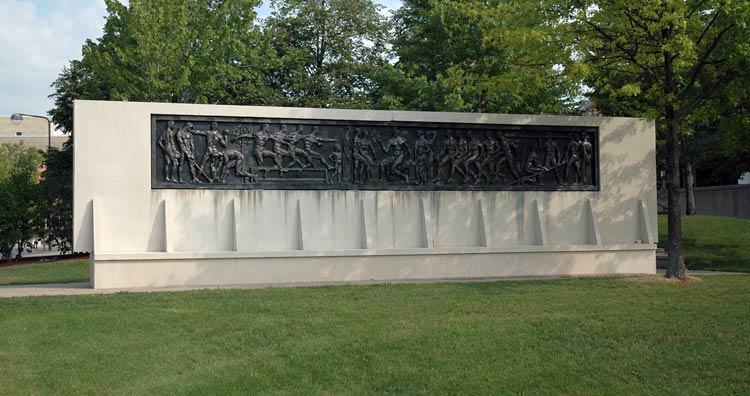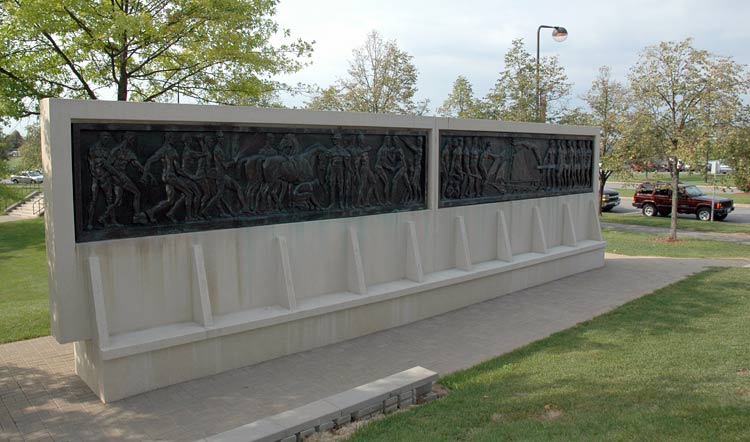Charles Cary Rumsey: 1920 Olympic Games Frieze Realized Again

Olympic Games Friezes at Alumni Arena, Coventry Entrance, University at Buffalo North Campus. South view of the 2-sided installation.
Click here to view a detailed large view.
In 1920 Buffalo-born sculptor Charles Cary Rumsey was commissioned to create three plaster bas-reliefs to be later used for cast-concrete friezes for the Isaac L. Rice Stadium in Pelham Bay Park in the Bronx. The three panels total 60 feet in length and depict athletes competing in Olympic events: equestrian events, tennis, lacrosse, water sports, and track and field events.
The finished concrete friezes were installed in 1927 and remained until Rice stadium was demolished in 1989, at which time they were also destroyed.
Casts of plaster/burlap reinforced with steel rods had been made from the original mold and, in 1934, the casts were bequeathed to the University (of) Buffalo by Charles Cary Rumsey's widow, Mary Harriman Rumsey. Four years later they were installed in Clark Gym on the South Campus where they remained for 55 years, sustaining wear and minor damage.

North View of the 2-sided installation.
Click here for a large view of the left panel.
Click here for a large view of the right panel.
In 1993, the plaster friezes were removed from Clark Gym and the UB Casting Institute began the long process of conservation and restoration of the panels in anticipation of future casting in bronze. Private funding from numerous sources including foundations and corporations was solicited to cast the friezes and create the installation frame to hold them. In summer 2004 the Charles Cary Rumsey Olympic Games Friezes were installed beside the entrance to Alumni Arena (Conventry Entrance), once again returned to the day's light.
Note on the artist: Charles Cary Rumsey is remembered for his sculpture in the Beaux-Arts Style. A noted
amateur athlete in polo and boxing, he often sculpted animals, especially horses. He also created works for parks, memorials,
and private clients. He died in an automobile accident in 1922 at age 43. Numerous pieces of his work are visible In Western New York. The Burchfield-Penney Art Center has a permanent collection
of his works. Out-of-doors, his work can be seen at the Albright-Knox Art Gallery (Pizarro), Forest Lawn (Three Graces),
and The Buffalo History Museum (Centaur).